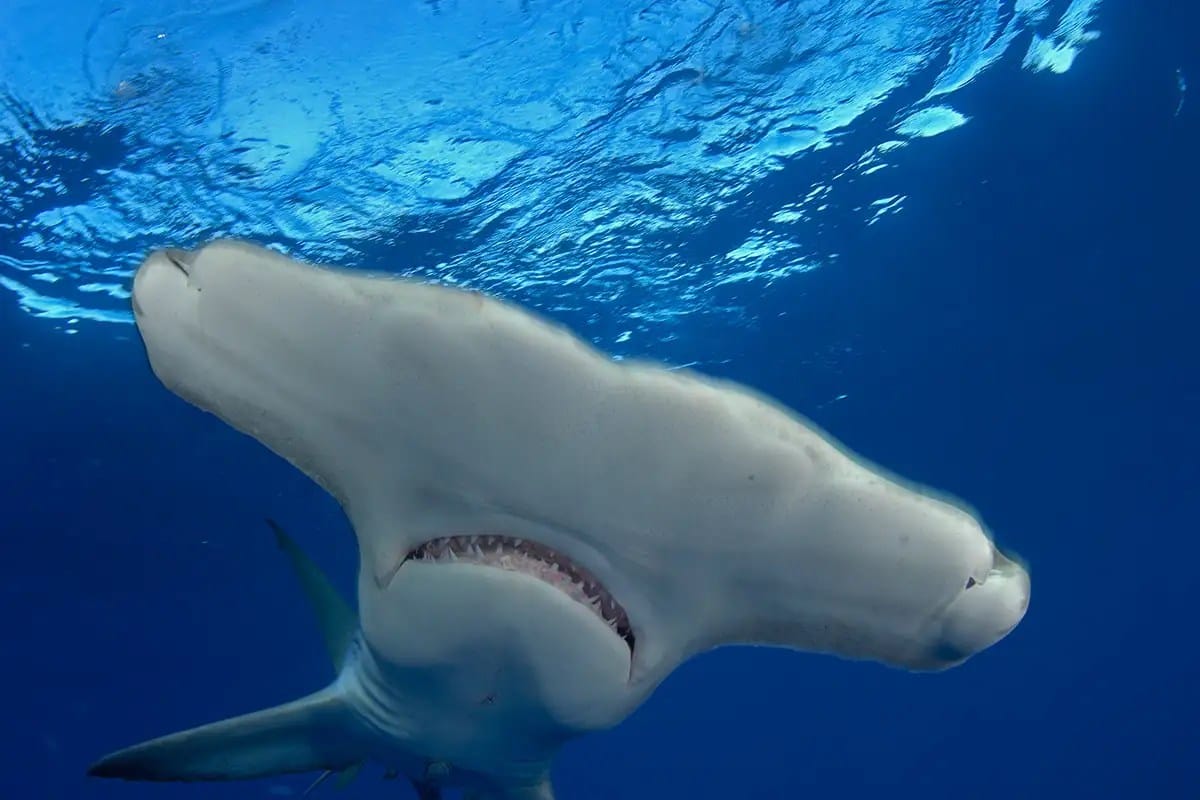Sharks, apex predators of the ocean, are renowned for their speed and agility. But a surprising limitation lurks beneath their powerful exterior: most sharks can’t swim backwards. This intriguing fact raises numerous questions about their anatomy, evolution, and survival. Let’s dive deep into the science of shark locomotion and uncover the truth about their backward (or rather, lack thereof) swimming abilities.
Decoding Shark Movement
Sharks have evolved a unique system of movement perfectly suited to their predatory lifestyle, but this system has its limitations.
The Role of Pectoral Fins
A shark’s pectoral fins, those wing-like appendages on their sides, are rigid and angled downwards. These fins excel at generating lift and maintaining stability, enabling sharks to glide effortlessly through the water. Imagine trying to row a boat with oars fixed in a downward position. Much like airplane wings, these fins are designed for forward motion, not reverse. Trying to generate backward thrust with such rigid structures is nearly impossible. This design contributes significantly to their inability to swim backward efficiently.
Maneuvering Without Reverse
While sustained backward swimming is out of the question for most sharks, they’ve developed ingenious workarounds. Sharks are negatively buoyant, meaning they’ll sink if they stop swimming. This controlled sinking can sometimes be mistaken for backward swimming. Additionally, their powerful tails and flexible bodies allow for rapid turns and rotations, giving the illusion of reversing in tight spaces. Some species, like the epaulette shark, can even “walk” backwards on the seafloor using their fins, but this is a specialized adaptation, not true swimming. For a deeper understanding of how another creature navigates its environment, explore the interesting question of whether frogs can give you warts.
Evolutionary Implications
Why haven’t sharks evolved the ability to swim backward? Current research suggests that the evolutionary advantages of speed and forward agility outweigh the need for reverse movement. Their hunting strategies, primarily based on ambush and pursuit, rely heavily on forward momentum. Perhaps the energy expenditure required to develop and maintain the musculature for backward swimming would be a significant evolutionary trade-off, considering its limited utility in their hunting strategies. This is an area of ongoing research, and further studies may reveal more nuanced explanations.
Why Dragging a Shark Backwards Can Be Fatal
Given the information above, the question naturally arises: should you ever drag a shark backwards? The definitive answer is a resounding no. This seemingly simple action can have devastating consequences.
Respiration and Ram Ventilation
Many sharks rely on ram ventilation to breathe. This process involves swimming forward with their mouths open, forcing water over their gills to extract oxygen. Dragging a shark backwards disrupts this vital flow, essentially suffocating the animal. Even sharks capable of buccal pumping, a method of actively pumping water over their gills, find ram ventilation more efficient, especially while swimming. Therefore, dragging them backwards, regardless of their respiratory adaptations, adds unnecessary stress and interferes with their natural breathing process.
Anatomical Constraints and Stress
Dragging a shark backwards goes against its fundamental body design. The rigid pectoral fins, optimized for forward motion, offer no assistance in reverse. Their large heads, beneficial for navigating currents headfirst, become significant sources of drag when pulled backward. This forced movement can cause disorientation, stress, and even physical injury, particularly to the tail and spine. While research on shark cognition is ongoing, current evidence suggests they experience stress and pain much like other animals. Dragging them backwards is undoubtedly a traumatic and potentially life-threatening experience.
Can Sharks Swim Backwards in the Deep Blue Sea? A Deeper Look
The ocean is a complex environment, and sharks have evolved a remarkable suite of adaptations to thrive within it. However, swimming backwards isn’t one of them. Their unique anatomy dictates their movement strategies.
Pectoral Fins: A Two-Sided Coin
As we’ve discussed, the rigid, wing-like pectoral fins of sharks are instrumental in their forward propulsion and maneuvering. They provide lift, stability, and control, allowing sharks to make sharp turns and brake quickly. But this specialization comes at a cost: the inability to generate reverse thrust. Imagine trying to row a boat with fixed oars—you’d have exceptional forward power but virtually no control in reverse. Sharks face a similar dilemma.
Alternative Maneuvering Tactics
Sharks compensate for their lack of a “reverse gear” with clever tactics. They utilize gravity to descend, often appearing to swim backwards when they simply allow themselves to sink. Their powerful tails enable rapid rotations and turns, which can be misinterpreted as backward swimming, especially in confined spaces. While these maneuvers are effective for navigating their environment, they are not true backward swimming.
Impact on Survival
This lack of reverse swimming has significant consequences for sharks. It affects their hunting strategies, making it challenging to re-engage prey after a missed attack. It also makes them vulnerable to certain predators like orcas, which can exploit this limitation by strategically turning sharks onto their backs, inducing tonic immobility. This temporary paralysis highlights the vulnerability associated with their inability to easily right themselves or retreat.
| Feature | Description | Impact on Swimming |
|---|---|---|
| Pectoral Fins | Rigid, wing-like structures designed for lift and steering. | Prevents backward swimming |
| Body Shape | Streamlined, built for forward motion. | Enhances forward movement |
| Buoyancy | Negatively buoyant; sink if not actively swimming. | Allows for controlled sinking |
| Turning Ability | Highly maneuverable through quick turns and rotations. | Compensates for lack of reverse |
| Hunting Tactics | Rely on forward momentum for attacks. | Impacts hunting strategies |
| Predator Evasion | Vulnerability to predators who exploit their inability to reverse (e.g., orcas). | Influences survival strategies |
The Final Verdict: Can Sharks Swim Backwards?
The simple answer remains: no, most sharks cannot truly swim backwards. Their rigid pectoral fins and reliance on ram ventilation preclude efficient reverse movement. While some species exhibit limited backward maneuvering, these actions are not true swimming and serve specific purposes like repositioning or sinking. This constraint shapes their hunting strategies, predator-prey interactions, and overall survival. Ongoing research continues to unravel the complexities of shark locomotion, but for now, the evidence clearly indicates that backward swimming, in the conventional sense, is beyond their capabilities. The evolutionary trade-offs, prioritizing forward speed and agility, have shaped these magnificent creatures into the apex predators we know today.
- Senior at What Age: Benefits & Eligibility Guide - March 29, 2025
- Unlocking Senior Benefits: How Old is a Senior? Your Complete Guide - March 29, 2025
- Master Russian Politeness:A Guide to Saying Please - March 29, 2025

















2 thoughts on “Why Can’t Sharks Swim Backwards? The Surprising Truth About Shark Locomotion”
Comments are closed.